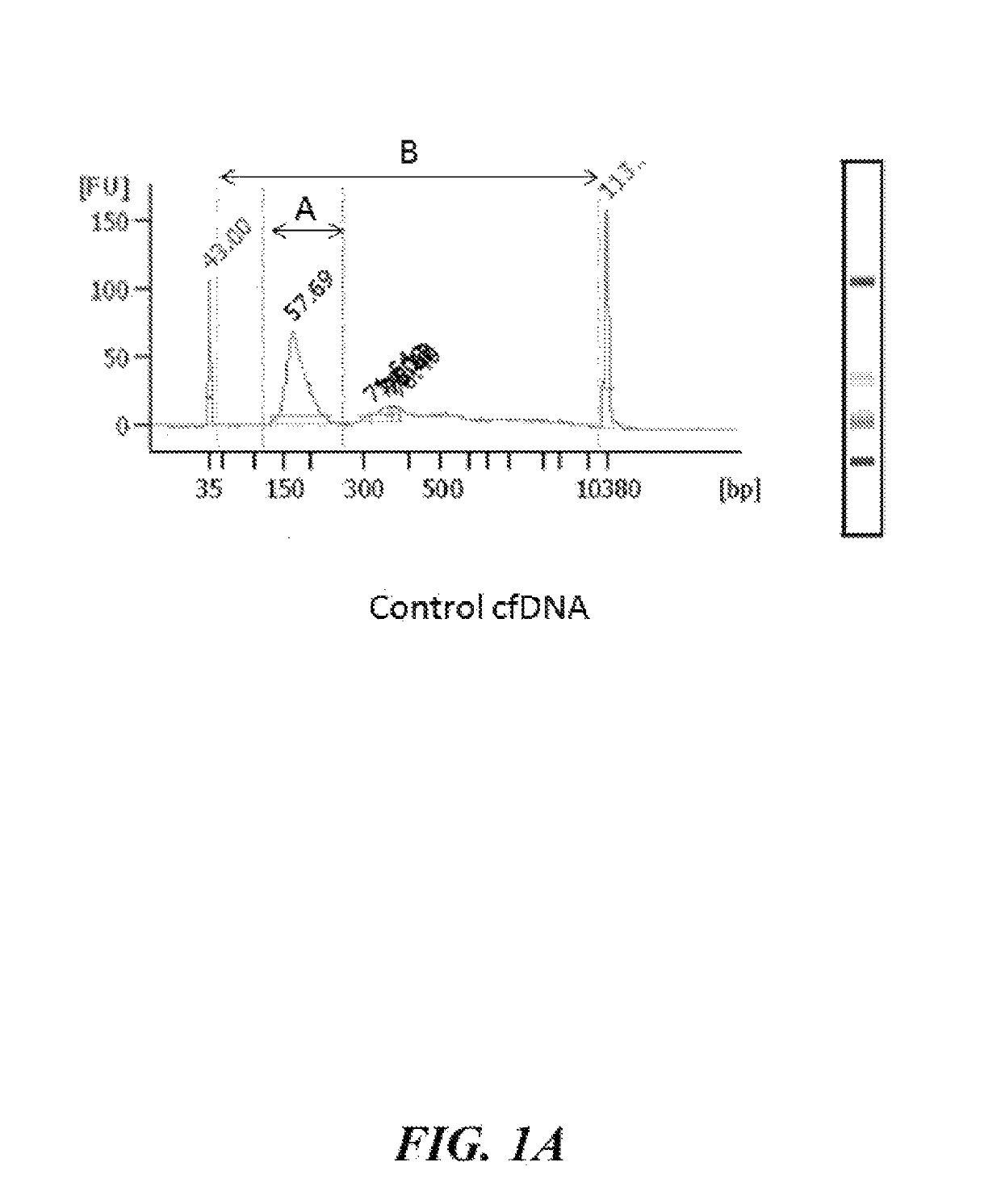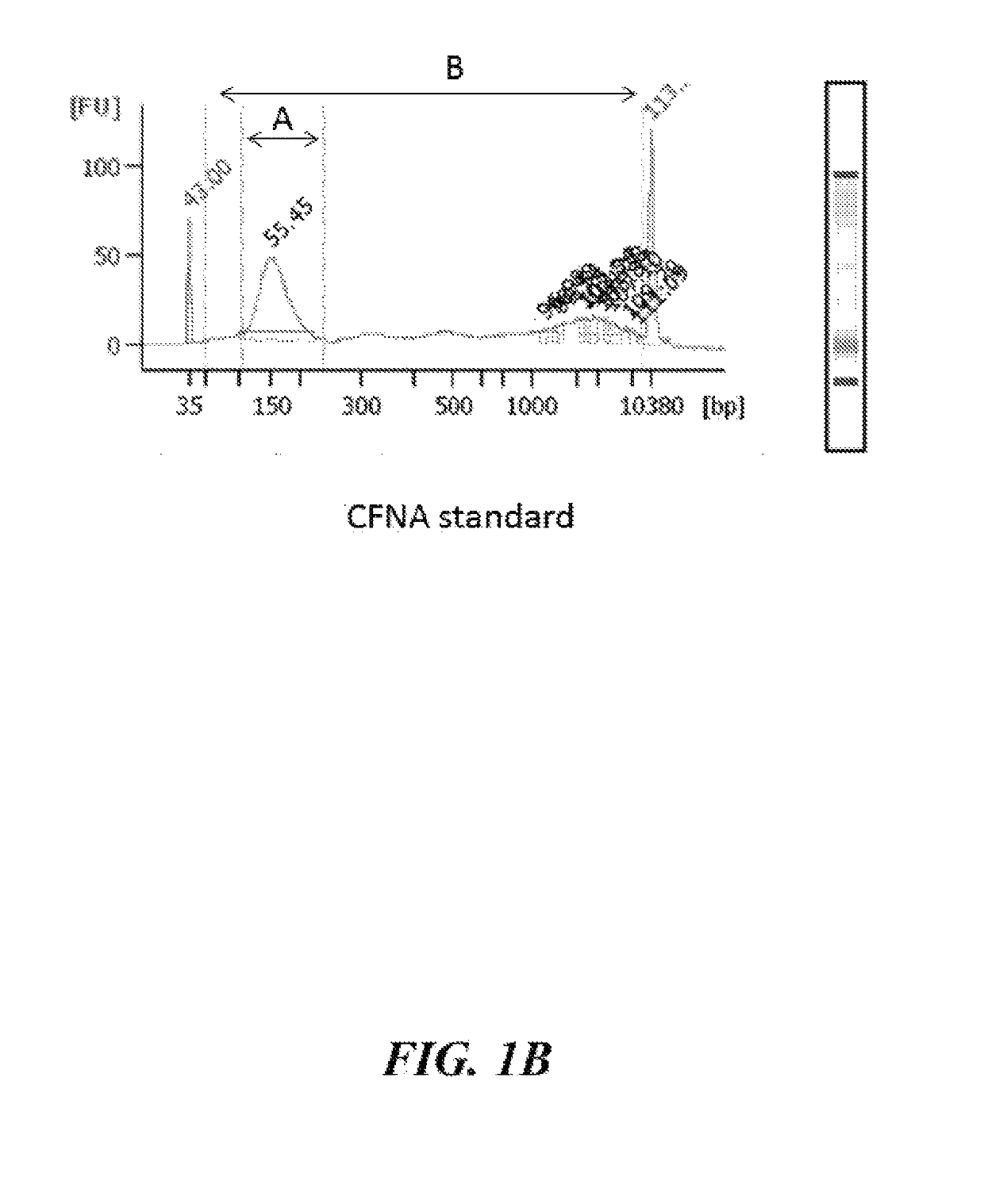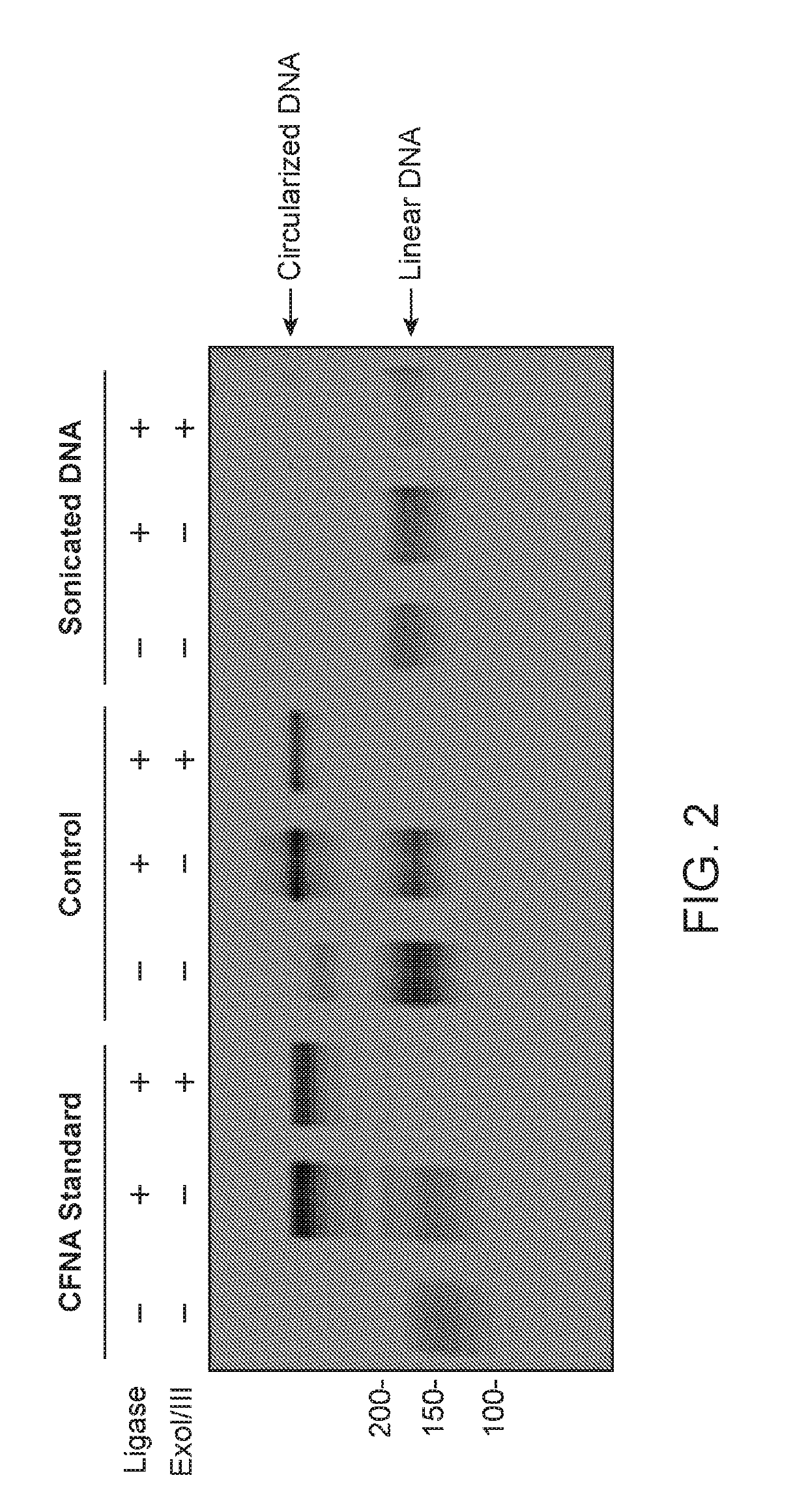Cell-free nucleic acid standards and uses thereof
a technology of nucleic acid standards and nucleic acids, applied in biostatistics, biochemistry apparatus and processes, instruments, etc., can solve problems such as the difference between real cfdna and artificial cfdna
- Summary
- Abstract
- Description
- Claims
- Application Information
AI Technical Summary
Benefits of technology
Problems solved by technology
Method used
Image
Examples
example 1
n of a CFNA Standard
[0174]A CFNA standard disclosed herein is generated by contacting nuclei isolated from cells to an endonuclease to generate a plurality of genomic polynucleotides. Nuclei can be isolated from any population of cells, for example cells of a cell line. Prior to nuclei isolation, cells are washed with phosphate buffered saline (PBS) and pelleted by centrifugation to remove media and other reagents that may interfere with downstream processes. The cell pellet is resuspended in a cell lysis buffer containing a permeabilization agent such as Triton X-100, Tween-20, saponin, SDS, NP40, streptolysin 0, proteinase K, pronase or triethanolamine. Alternatively, the cell sample is permeabilized using hypotonic shock and / or ultrasonication.
[0175]The nuclei are pelleted by centrifugation. Harvested nuclei are then treated with an enzyme such an endonuclease (e.g., caspase-activated DNase (CAD), DNase I including single-strand specific and double-strand specific DNases, DNase γ...
example 2
ribution of a CFNA Standard Disclosed Herein
[0177]Control cfDNA and a CFNA standard as disclosed herein were analyzed by Bioanalyzer to compare the size distribution of nucleic acids in each sample. FIG. 1A shows Bioanalyzer data for the control cfDNA sample. FIG. 1B shows Bioanalyzer data for the CFNA standard generated using the methods disclosed herein. The percentage (%) of nucleic acids in each sample having a length of about 100-300 bases was quantified by taking the ratio of the area under the curve of A (nucleic acids having a length of about 100-300 bases in length) to the area under the curve of B (nucleic acids having a length of about 50-1000 bases in length). In the control cfDNA sample, about 56% of the nucleic acids have a length of about 100-300 bases. In the CFNA standard, about 50% of the nucleic acids have a length of about 100-300 bases.
example 3
n of Inter-Molecular Ligation Efficiency
[0178]Control cell-free DNA, a CFNA standard as disclosed herein, and sonicated genomic DNA were compared for inter-molecular ligation efficiency. Ligation reactions were carried out using a standard KAPA NGS library construction kit. Briefly, end-repair, A-tailing and adapter ligation were performed according to the manufacturer's protocol. Percentage (%) of molecules ligated were measured using a KAPA quant qPCR kit (Table 1). As shown in Table 1, the % of ligated molecules generated using the standard KAPA NGS library construction kit and sonicated genomic DNA (‘Sonicated genomic DNA’) is lower than with a CFNA standard disclosed herein (‘CFNA standard’).
TABLE 1Comparison of inter-molecular ligation efficiencyInter-molecularLigation Efficiency% of Ligated MoleculesControl cfDNA61%CFNA standard77%Sonicated genomic DNA32%
PUM
| Property | Measurement | Unit |
|---|---|---|
| Fraction | aaaaa | aaaaa |
| Fraction | aaaaa | aaaaa |
| Fraction | aaaaa | aaaaa |
Abstract
Description
Claims
Application Information
 Login to View More
Login to View More - R&D
- Intellectual Property
- Life Sciences
- Materials
- Tech Scout
- Unparalleled Data Quality
- Higher Quality Content
- 60% Fewer Hallucinations
Browse by: Latest US Patents, China's latest patents, Technical Efficacy Thesaurus, Application Domain, Technology Topic, Popular Technical Reports.
© 2025 PatSnap. All rights reserved.Legal|Privacy policy|Modern Slavery Act Transparency Statement|Sitemap|About US| Contact US: help@patsnap.com



